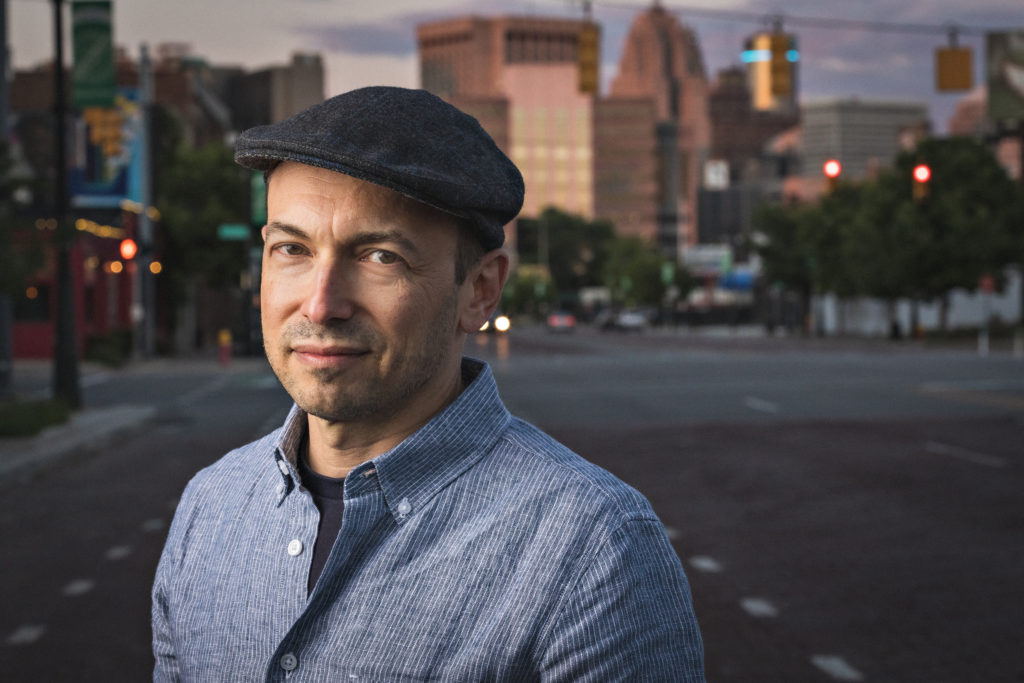For music journalist Dan Charnas, telling J Dilla’s story was a personal quest.
Dilla, the highly influential rap producer, died in 2006. “In the 15 years since his death, journalists and academics have written about him, and musicians have extolled his work,” Charnas says. “But no one had put it all together in a definitive statement: That this beatmaker who worked out of a basement in Detroit literally pioneered a new rhythmic time-feel, one that traditional musicians and electronic producers around the world now use. So, I felt a sense of urgency to recount that story, that innovation, and make that argument so he can have his rightful place in history.”
Charnas began his work on Dilla Time in 2017 with a course he taught at the Clive Davis Institute at NYU. “The reporting and research started for me during the creation of that class, and continued until I submitted the manuscript in 2021,” he tells us. He conducted more than 200 interviews.
Charnas chronicles Dilla’s journey from gifted, Detroit-born James DeWitt Yancey to Grammy-nominated hip-hop producer, his work with acts like D’Angelo and Erykah Badu and how he influenced superstars like Michael Jackson and his sister Janet. When Dilla died of a rare blood disease at 32, he had never had a pop hit.
Dilla Time is a portrait of a complex genius taken too young, as well as a glorious study of the music and culture he created.

SPIN: What would the world of hip-hop have been like without him? How did he revolutionize the genre?
Dan Charnas: Before J Dilla, musicians perceived time in two ways: straight time, where every beat is felt evenly; and swing time, where the beats are uneven. J Dilla on his drum machine collided these two feels, straight and swung, putting them in conflict with each other, which people often called “drunken” or “limping” or “sloppy.” Dilla used that new feel in the music his group Slum Village [did], and with MCs like Common in the late 1990s. But it was quickly adopted and amplified in the 2000s by artists like D’Angelo, in the artists coming out of Philadelphia like Musiq Soulchild and Floetry, and soon made its way onto songs by Brandy, Michael Jackson, and many more. Now that “Dilla feel” is ubiquitous in genres from hip-hop to jazz to pop, from Anderson .Paak to The 1975.
Did you know him personally?
I worked with him only once, back in 1999, when I went to Detroit with an artist I signed to Warner Bros. Records named Chino XL. We spent the weekend in the D and recorded two songs. I wasn’t even conceiving of that trip as something I needed to document, so I didn’t, much to my regret! We never connected in person after that, but the experience stayed with me as, of course, a huge fan of his music. It wasn’t until about a decade later, when I became an author and professor—and also married into a family from Detroit—that the pieces of my Dilla study started coming together.
What would you like everyone to take away from the book?
A lot of folks reduce his method to being simply “loose” and his technique to “not quantizing” on his drum machine (which means to turn off the mechanism that corrects little timing errors made by the fingers when programming the machine). Both of these are huge oversimplifications and really miss what made him a genius. He had severalkey techniques to achieve rhythmic conflict, and that conflict isn’t just about being “loose” and making mistakes, but about intention.
Which of the legends are actually myths?
Other than the quantization thing, there are other fables. I think there was a part of me that actually wanted to find some confirmation that Jay Dee had really produced “Got ‘Till It’s Gone” by Janet Jackson, or that Dewitt Yancey, his father, had ghostwritten “It’s a Shame” for The Spinners on Motown, which is a thing we’ve seen promulgated on websites. In four years, I could find no confirmation of either, and instead found evidence and testimony to the contrary.
What were your big discoveries when writing the book?
For me, it was the little discoveries that fascinated me: His Citizen Kane “rosebud” moment for his time-feel and obsession with error while watching the movie A Piece of the Action as a kid; or the story of how his budding solo career and deal with MCA came together and fell apart.
Speculatively, what do you think J Dilla’s life would have been like if he hadn’t passed away in 2006?
It’s so hard to say. For years before he got sick in 2003 with TTP, a rare blood disease, Dilla was dedicated to remaking himself, to relentless revision. So, it is very likely that he would have kept reinventing his sound. There’s a likelihood that his influence on jazz players would have pulled him closer to that world. Mostly when I think about James living, it is about how he would have gotten to know his two daughters, who are both talented and lovely people, and had the pleasure of being a father.
What do you believe is the heart of J Dilla’s life story?
One of James’ central themes was his struggle for credit—to be known and acclaimed for his work, and also the frustration at seeing his sonic signatures adopted by others with more commercial success. In some way, I hope this book can redeem that oversight. But more profoundly James Yancey’s story is one about how to be in the world, no matter what you might be facing. Dilla’s disposition was one of singular dedication to creating beauty, throughout a difficult illness, until the day he died. That’s what made him, in a real way, immortal.

Leave a comment